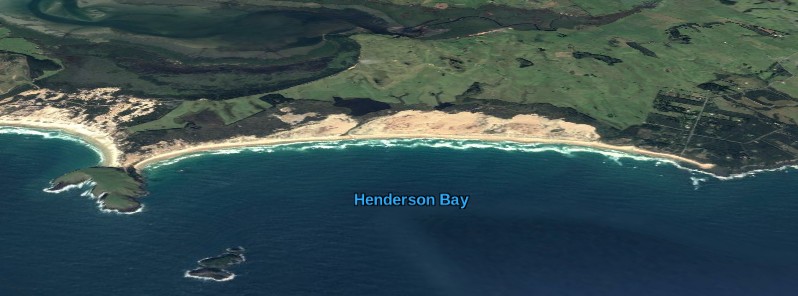New Zealand’s biggest tsunami reached 32 m (105 ft) a.s.l. and 1 km (0.62 mi) inland

New Zealand's National Institute of Water and Atmospheric Research (NIWA) has released a new database and interactive map that enables users to search through scientific records of paleotsunamis that affected New Zealand shores. Records date back to pre-historic times and show strong evidence that New Zealand’s biggest tsunami occurred between 1450 and 1480 AD at Henderson Bay, Northland where deposits reached some 32 m (105 feet) above sea level and extended about 1000 m (0.62 miles) inland.
A palaeotsunami is a tsunami that occurred before written records existed and has been discovered by investigating geological and anthropological evidence.
This information, which was previously stored in old spreadsheets or historic documents, has been transferred to an interactive map and database that enables users to search for palaeotsunami records by location, time and strength of scientific validity. The map reveals palaeotsunamis have occurred along almost all parts of the New Zealand coastline but there are greater concentrations on the east and west coasts of the upper half of the North Island.
It can be found at: http://ptdb.niwa.co.nz
Understanding tsunami risk from past events
"The aim of the database is to increase awareness of New Zealand’s tsunami hazard and help in the analysis of palaeotsunami information," project leader and NIWA scientist Darren King said. "If you are assessing tsunami risk, it is helpful to know the history of past events in your area. This is an easy way to look at multiple records to understand risk profiles based on the available evidence."
King said many of New Zealand’s palaeotsunami records had been sitting in spreadsheets, or held in information that hadn’t previously been published, such as reports, logs and old historical documents.
"The information was difficult to look at, there was limited access to it and so few people were using it. We think this database has a broad audience including environmental managers, civil defense staff, researchers and the wider public who now have an easy way to look at multiple records, explore the data and look at what has happened in the past," King says.
The assortment and age of records means some are regarded with less confidence than others, but researchers have included a color coding system on the map to indicate the level of scientific veracity.
Along with the location, each record may include information on how far the tsunami traveled inland, where the information came from, maximum water heights, what damage was caused, the strength of the evidence and the date range of when it occurred. Records date back to pre-historic times.
King says there is strong evidence that New Zealand’s biggest tsunami occurred between 1450 and 1480AD at Henderson Bay, Northland where deposits reached some 32 m above sea level and extended about 1000 m inland. The source of the tsunami was a quake in the Tonga-Kermadec region (lat -35.8, long 179.01).
The database would be added to as new research was undertaken and includes the latest published palaeotsunami research from New Zealand confirming evidence of three palaeotsunamis at Mataora-Wairau Lagoon in Marlborough in the past 2000 years.
Featured image credit: Google

Commenting rules and guidelines
We value the thoughts and opinions of our readers and welcome healthy discussions on our website. In order to maintain a respectful and positive community, we ask that all commenters follow these rules:
We reserve the right to remove any comments that violate these rules. By commenting on our website, you agree to abide by these guidelines. Thank you for helping to create a positive and welcoming environment for all.